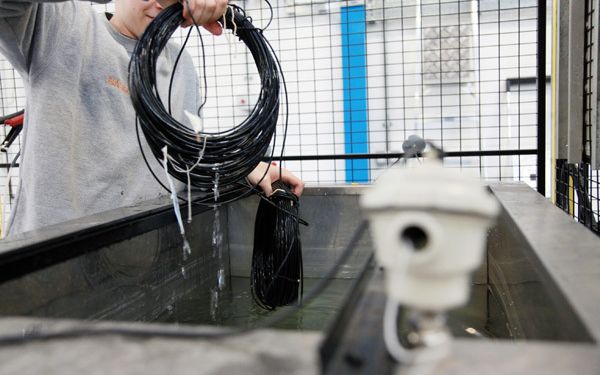Multi-Million Pound Lab gives Peace of Mind to Cable Buyers
When you are specifying and buying cable, you may not consider what has gone into it, how it was designed and made, how it was tested and quality assured, and what its route has taken from copper mine to arrive at your project. Most buyers of cable look for the types and brands they are familiar with, and the cable size calculated for the circuit in question for each job.
Behind the scenes of cable manufacturing: the hidden benefits of buying a quality cable

There will be many decades of accumulated knowledge and know-how applied at each stage of the cable manufacturing process. From the definition of materials to the permissible sizes and constructions, through the manufacturing processes to the testing and quality assurance. All these provide the hidden benefits of buying a quality cable.
Cable manufacturers are expected to conduct quality assurance tests and checks before shipment, but unless the manufacturer is enrolled in a recognised approval scheme, such as BASEC, this may not be supervised by independent experts.
Independent cable testing
That is the reason why top-flight approval schemes like BASEC operate their own test laboratories, equipped with the latest equipment, fully accredited by internationally recognised bodies like UKAS, and employing experts with many years’ experience in laboratory practice and product testing. By basing its certification decisions on comprehensive initial type testing across a range of production capability, coupled with regular sampling of manufactured cable (up to 200 samples per year from each factory) purchasers will have peace of mind that cable supplied to their projects will be under constant scrutiny by both the manufacturer, and independently by BASEC.
BASEC’s state of the art cable test laboratory, based in Milton Keynes, UK, can trace its heritage back 40 years and has been testing thousands of samples each year throughout this period.
What kinds of tests are done on cables?
Cables made to defined standards are subject to numerous tests and examinations, often many hundreds for a complex cable. These are grouped into construction, mechanical, materials, electrical, chemical, fire and smoke. Specialist types of cable are often subjected to more exotic tests.
How is electrical testing done on cables?

Key to cable quality and safety are electrical properties, including the current carrying capacity derived from the copper (or aluminium) content of conductors. This is tested by resistance meters capable of micro-Ohm precision, calibrated regularly and with the sample kept at a constant controlled temperature to ensure a correct measurement. Electrical safety is ensured through voltage and insulation resistance testing, usually at many multiples of the rated voltage, carried out on the whole cable and its separate components. Some more challenging tests are conducted in hot water. BASEC can safely conduct tests up to 100kV, ensuring a wide range of cables can be assessed in-house.
What types of fire testing are needed for cables?
Fire safety is of increasing concern to end users, and new material classes such as LSHF have emerged over the years, which provide a much greater degree of safety and reassurance. All cables are expected not to propagate fire, and most will undergo a small Bunsen burner test, but some go beyond this to continue operating during a serious fire, without affecting circuit integrity. BASEC operates a comprehensive suite of circuit integrity fire tests to British, European and international standards. Fire spread is another key concern of architects and designers, so BASEC also has the capability to conduct vertical flame tests on bunched cables, including the new European CPR classification tests.
Mechanical, materials, and construction tests
While safety is a critical concern for many users, reliability and longevity are of importance to most projects, especially in construction. Cables are tested for the materials used, which are subjected to a variety of environmental threats that that might experience in use, such as heat, oils and other fluids, ozone, UV, cold, impact, abrasion and many others.

The projected lifespan of a cable will always depend on how it is used, but simple artificial ageing in an oven, followed by tensile testing for strength and elongation can tell you a lot, particularly as there are strict limits to how much a material can change in properties during this ageing.
For end users, simple constructional aspects such as the correct marking of the cable, including readability and durability, are also important for long terms safe and flexible use.
Comprehensive, regular cable testing
The BASEC cable approval schemes apply all applicable laboratory tests to each cable type, on at least an annual basis. This shows that each approved manufacturer is continuing to produce consistently good quality cable, giving the specifier and purchaser peace of mind that if they fit a BASEC approved cable they will get the performance, safety and longevity they expect.

